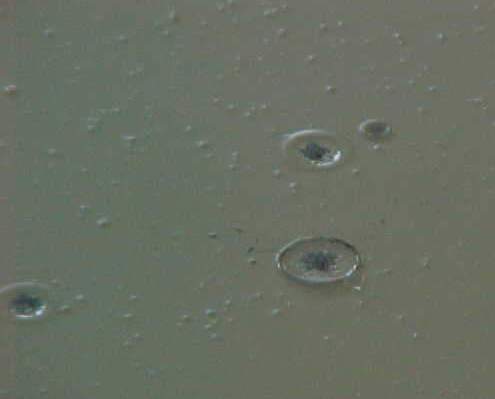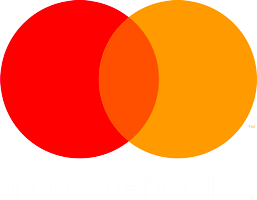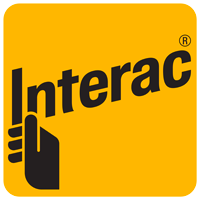Problems & Diagnosis
Blistering & Bubble Formations:
When Part A and B are combined together and mixed thoroughly (do not hand mix), some air is entrapped in the material. If the coating is applied during cooler temperatures, especially if the coating is not preconditioned (kept outdoor in colder temperatures), there is very little chance that air bubbles will break before the material is set. This downfall ultimately leads to the formation of small bubbles at the surface of the coating after it is hardened. This can be prevented by applying the coating in warmer weather by or preconditioning the material (keeping it warm inside until use). Blistering also occurs when you apply the coating in direct sunlight.
If the bubbles are so severe throughout the floor to such an extent that it must be repaired, sand the floor with 100 mesh sand paper using a belt-sander, then vacuum it and reapply the epoxy coating.
Outgassing:
Outgassing is the phenomenon describing the large bubble formation or blistering that occurs in the complete cured coating. This is due to air coming out of the concrete slab as the epoxy floor begins to harden. Outgassing happens more often in industrial and commercial concrete slabs than in residential flooring. A concrete slab in a home usually has a smoother finish than those on industrial floorings. The result is a tighter surface with little or no prospect for outgassing in garage surfaces. Nevertheless, outgassing can still occur. Generally speaking, the rougher and more porous the floor, the greater the likelihood of outgassing under certain application conditions.
The most common cause for this phenomenon is air in the voids of the concrete as the concrete slab is warming up. The air forces its way through the freshly applied coating. As the coating starts to harden, the air forms buckets that eventually break. When they do, they form large blisters. This problem is very dependent on the quality of the concrete itself and how porous it is. Applying our waterborne primer to seal the concrete is a very effective way of avoiding this problem. As well, applying the epoxy coating under direct sunlight or on very hot afternoons contributes to this. It is recommended that you apply it either in the early morning or later in the afternoon.
Repairing damages (blisters) of outgassing is somewhat complicated. For the small ones, just break it and sand it to smooth surface. Fill large blisters with epoxy gel (ZeraBond™ Type 4), and allow it to cure to a hard surface. Sand this surface with 50-60 alumina grits sand paper to a smooth finish, then reapply the epoxy coating over it.

Poor Adhesion:
By far, epoxy is far more superior than any other chemistries in terms of adhesion to concrete or metal surfaces. There are a number of reasons for poor adhesion of the epoxy to a concrete floor, including:
- faulty or insufficient surface preparation
- contamination of the material with oil, dirty solvent or dirty tools
- improper mixing of the two components
- wet or greasy floors
Providing that the damage does not cover the entirety of the floor, areas of poor adhesion can be defined by tapping over the area with a hammer. A hollow sound indicates lack of adhesion. A chain drag can also determine delaminations in both concrete and coatings. Mark out the suspected areas a few inches outside the limits of poor adhesion and cut through the topping, then remove the damaged area by light mechanical hammers to establish the cause of adhesion. Make sure that the concrete is free of grease, etc., and reapply the epoxy coating. It is important to know that epoxies have relatively low peel strength and in instances of poor adhesion, attempting to remove the patch by chiseling can lift a large area of floor out, even where adhesion is still good. Such lifting can be limited by a "stop-cut".
Tacky Surface or Soft Patches:
Surface tack can result from many reasons. One common cause of a tacky surface is improper mixing ratios (using the wrong ratio) or inadequately mixing the materials together. If the material does not harden after a few days, it confirms this suspicion. The tacky material has to be removed, the surface cleaned and the coating reapplied. Another reason could be blushing. This can happen in conditions of high humidity or in close proximity to a water source while the material is still curing. In this case, the epoxy coating is hardened and firm but has a tacky surface, or white residues (salts). This material can either be removed with a vinegar solution (diluted with water) or by sanding it. In both cases, it is recommended to reapply the coating to ensure a glossy finish since this treatment will remove the gloss as well. Another reason for tackness can be attributed to a slow curing process in colder weather or if the product is applied under the minimum temperature that we recommend (less than 10°C).
Complete Damage & Disintegration:
This is a rare occurrence and only happens upon exposure to severe chemicals, particularly before achieving a full cure. Harsh chemicals such as acetone, methyl ethyl ketone, glacial acetic acid, paint stripper and benzyl alcohol should be kept away from the floor since the damage is irreversible. ZeraDur™ is resistant to battery acid (35-40% sulfuric acid). However, if the acid is not diluted with water and cleaned immediately, and is allowed to stand for an extended period of time, it will get stronger (more concentrated) and may severely damage the floor. The same is applied to vinegar (acetic acid) and brake fluid.
Lack of Uniformity:
This has to do with technique rather than with the material itself. The broadcasting of a coloured quartz aggregate (or aggregate for slip) must be done carefully and uniformly to avoid any rough area formation. If you are not experienced in doing so, please ask our professional flooring staff to help you out. Lack of uniformity is also caused by poor premixing of component A (containing the colourants). Avoid over-rolling the coating and apply it evenly and at the right thickness. Another reason that may cause discolouration is back rolling or excessive rolling after the material starts to set.






